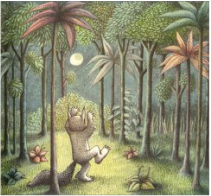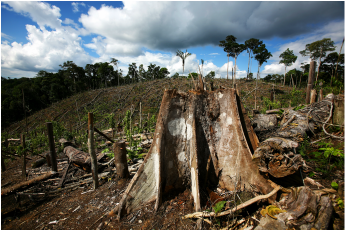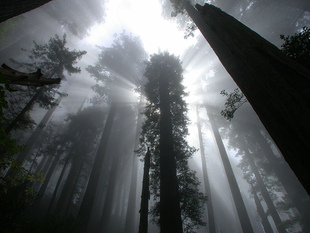 Many of us are familiar with the classic children's book Where the Wild Things are by Maurice Sendak, where our hero Max sails to an unconquered jungle, encounters wild beasts, and makes it home in time for supper. This type of foray into the wild has long captured many an author's as well as reader's mind, both young and old. How many of us have dreamt of adventure in the great unknown forests of the world? Only there is one major problem with this dream; these forests no longer exist in our world today. There was a time in human history (not so long ago) that these forests really did exist. The vast Amazon and Congo basins, even the British countryside, which inspired J.R.R. Tolkien to create magical forests where trees could talk and move. And why not? Couldn't these magical places exist? Not perhaps Tolkien's ents, but a place so strong and wild, like in Conrad's Heart of Darkness, that humans could not grasp its power and meaning. Thanks to those authors most of us can still imagine a truly wild place. Modern geography; however, does not provide such a pleasant reality. Deforestation has claimed much of the world's wildest places. Notably it has split them apart. Recent studies by North Carolina State University show that 70% of remaining forest is within 1km (.6mi) of the forest's edge. That doesn't leave much room for the wild things.  Deforestation to create farmlands, oil wells, and endless roads has fragmented the world's forests destroying our now fabled wild places and wreaking havoc on forest biodiversity. Forest fragmentation is seen to reduce biodiversity by 75% as species struggle to survive at the brighter, hotter, and windier forest edges. The closer edges also allow for foreign species to penetrate and disrupt the fragile forest ecosystem. Human hunting being perhaps the largest impact on the system as humans take out much of the larger game. This reduction in top of the chain predators has immense effect on the entire ecosystem as we have seen from studies like that of the wolves in Yellowstone National Park, as well as others. There is no easy answer. Rapid human population growth demands large amounts of food and energy that are often supplied through deforestation. Still all hope is not lost; being aware of where your food comes from as well as embracing renewable energy sources can help. As can supporting companies who work to protect the world's forests. Every little bit matters; because it's about more than the loss of large carbon rich trees, and the destruction of unique habitat, it's about our imagination and our ability to believe in a place where the wild things are. For a more complete understanding check out the article from The Conversation for information, graphs, and links to further statistics and researtch about forest fragmentation.
0 Comments
 Huddle, gather round, circle up! It's time we had a little talk about fog. I know for many a coastal Californian it is not a pleasant subject. In fact it is often a quick recipe for a ruined day at the beach; take one day off, a pair of sandals, a touch of sunscreen, and...sit there in a freezing fog bank. Despite its cool demeanor, and habit of harshing a surfer's mellow, fog is an essential ingredient in one of California's defining features of grandeur and beauty. Enter Sequoia Sempervirens, the redwood. These breathtaking beauties, known for their enormity of both size and age, not to mention beauty, are found in limited areas primarily in coastal California, and it is no secret why. Fog! Giant trees such as these, including the world's tallest living tree Hyperion, need a whole lot of water to survive and thrive. Fog creates the unique climate necessary for redwood survival. It is involved in two different functions that provide redwoods with ample water. The first is the coalescence of fog water droplets on the redwood branches allowing the redwood to essentially rain upon itself even when no actual rain is falling. The second is the absorption of water through epidermal tissue on the tree leaves. This second process is necessary because of the great height of the redwood, which becomes so tall that it can no longer bring water from the roots all the way to the top of the tree. This means redwoods can only obtain their record setting height in foggy areas. So next time the fog rolls in, instead of lamenting on the loss of a beach day, make your way into the enchanted forests and huddle up with a redwood family circle. |
